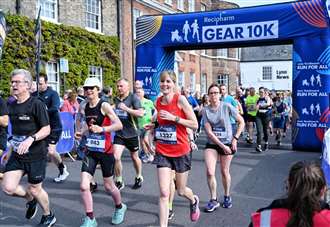
Work has officially begun on a new state-of-the-art diagnostics centre at Lynn’s Queen Elizabeth Hospital.
Selected members of staff from the hospital visited the site where they were some of the first to lift soil from the ground.
Building work is expected to finish by next July ready for the centre to open – which is said to reduce waiting times for patients needing MRI and CT scans as well as X-rays.
The centre will house “cutting-edge” scanners which will be used to diagnose and monitor a variety of conditions including cancer, heart disease and respiratory conditions.
Carly West-Burnham, director of strategy and integration, said: “This is a proud day for our patients and everyone here at Team QEH as we celebrate the start of a building that has been many months in the planning.
“This dedicated centre will provide some much-needed additional imaging capacity which will in turn reduce waiting times as well as provide faster imaging capacity, leading to earlier diagnosis, so ultimately improving health outcomes for our patients.
“This collaborative project with the three acute hospital sites in Norfolk and Waveney showcases partnership working at its best.
“We will be working to standardise practices and work collaboratively to transform how imaging and other diagnostic services are provided for the whole of Norfolk and Waveney.”
The work is part of the £86 million investment into three new diagnostic centres in the region.
Contractors R G Carter began work earlier this month on the site, located to the left of the main hospital building.
Darren Vincent, construction manager at R G Carter, said: “We are extremely proud of our ongoing relationship with The Queen Elizabeth Hospital and to be continuing to help achieve their future vision to improve and enhance vital healthcare provisions in Lynn and the surrounding area.
“It is great to be celebrating the start of construction on the new Diagnostic Centre with all those involved, and we look forward to delivering the positive benefits this facility will bring to both the NHS and the local community.”














